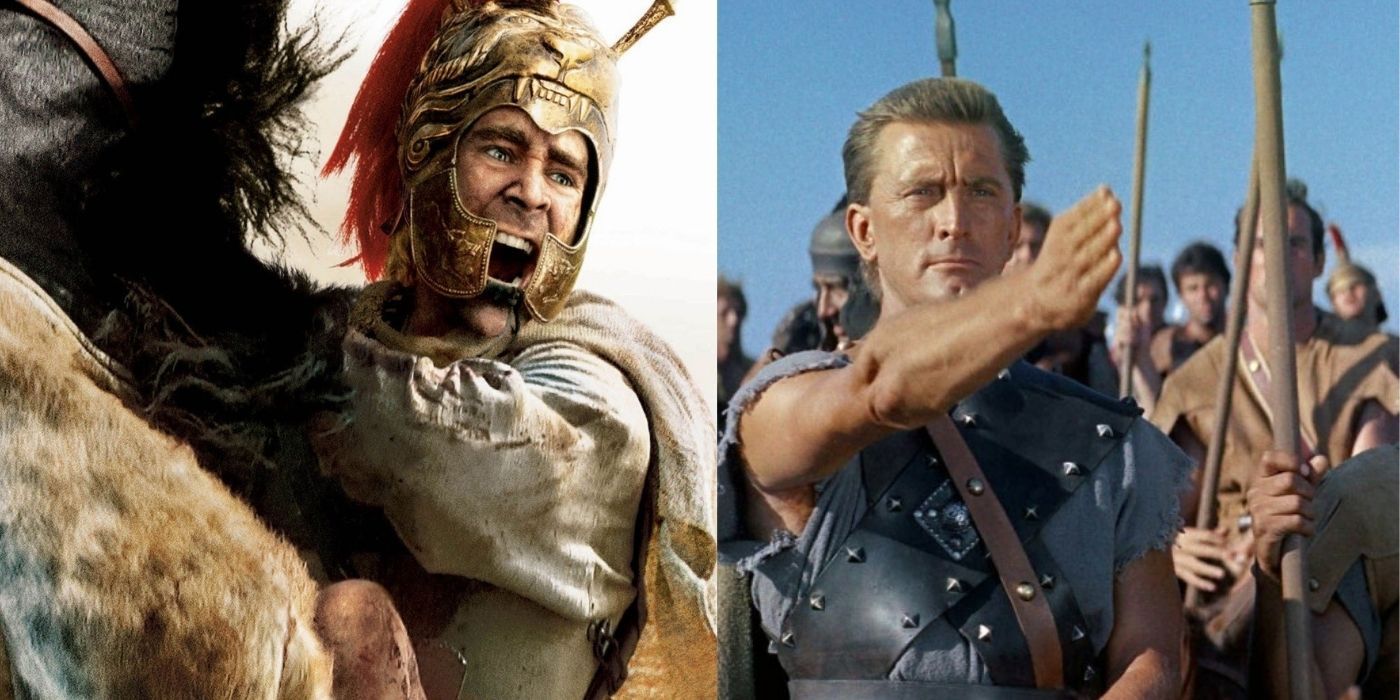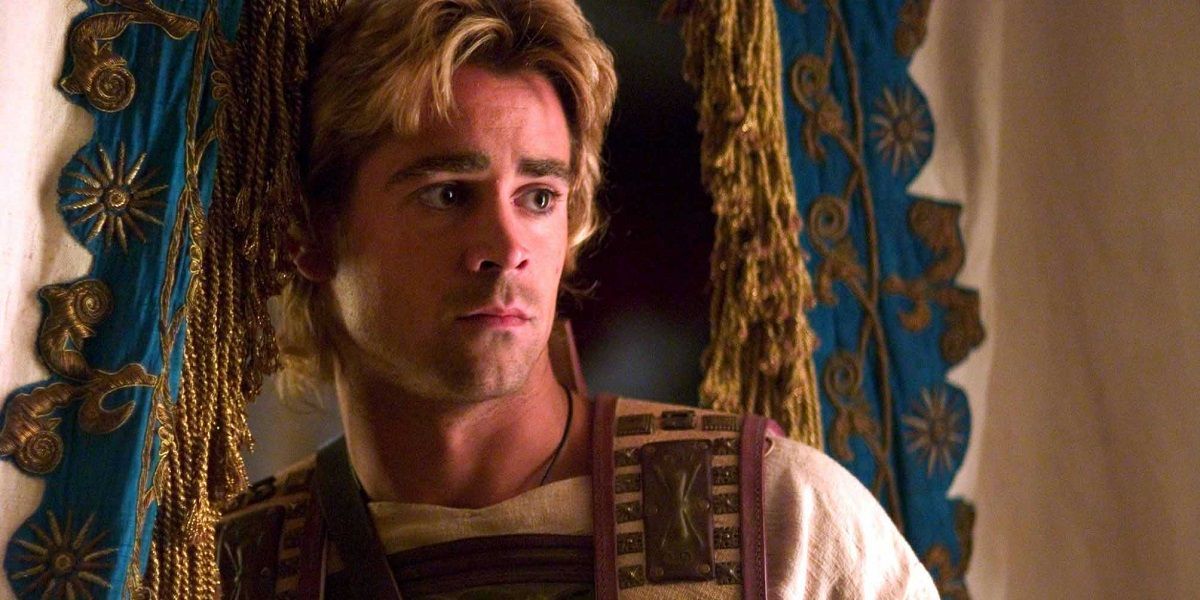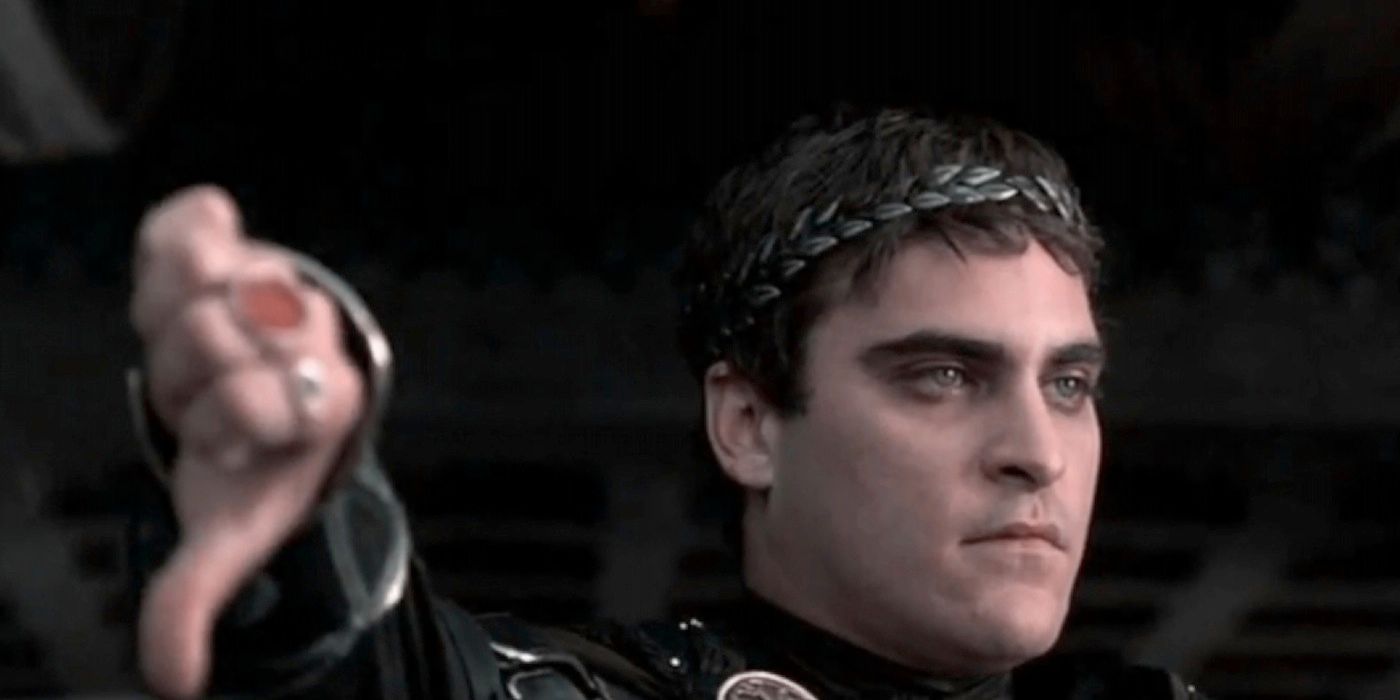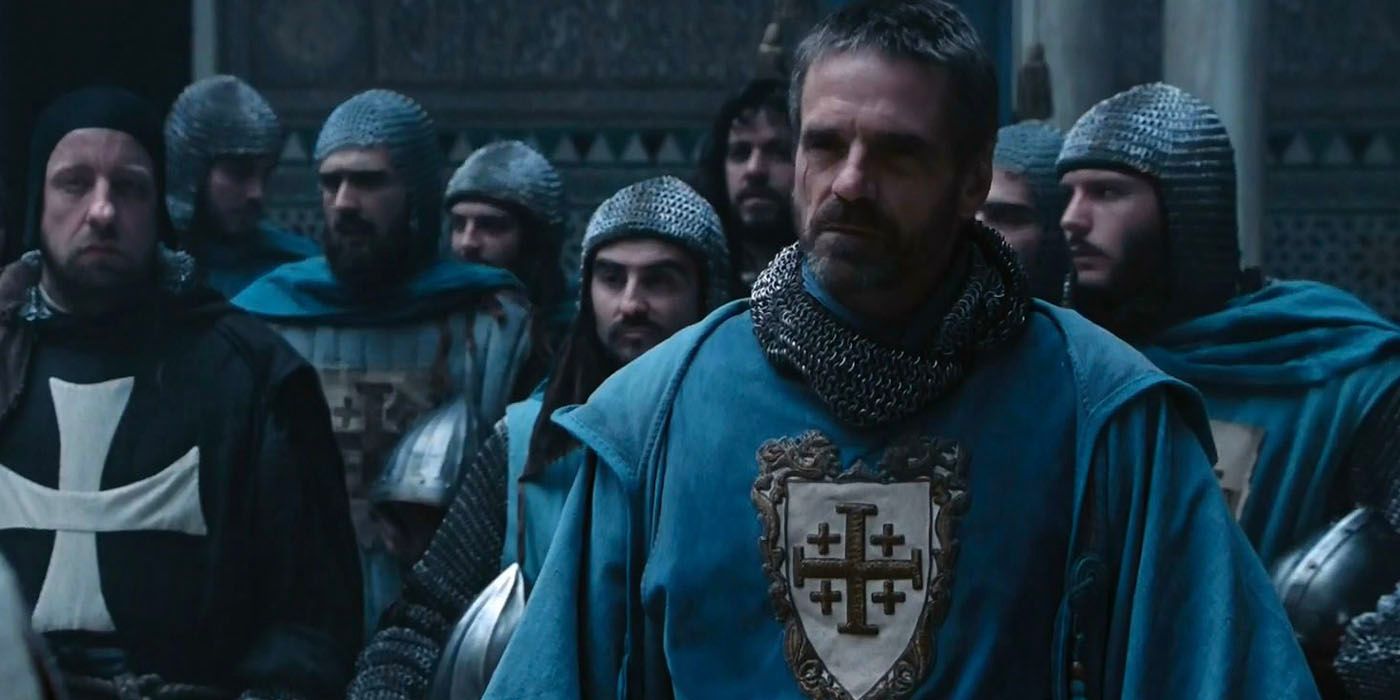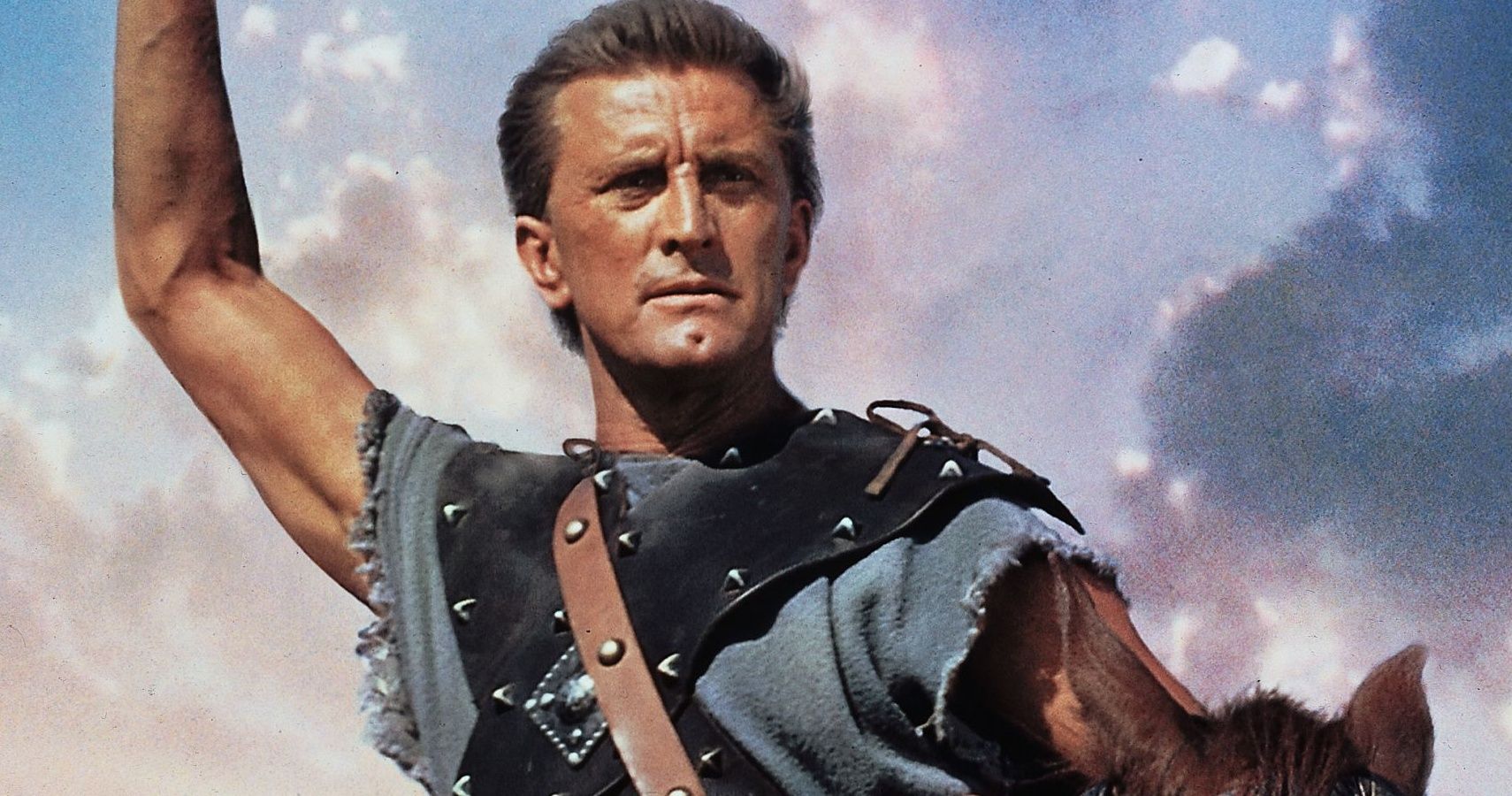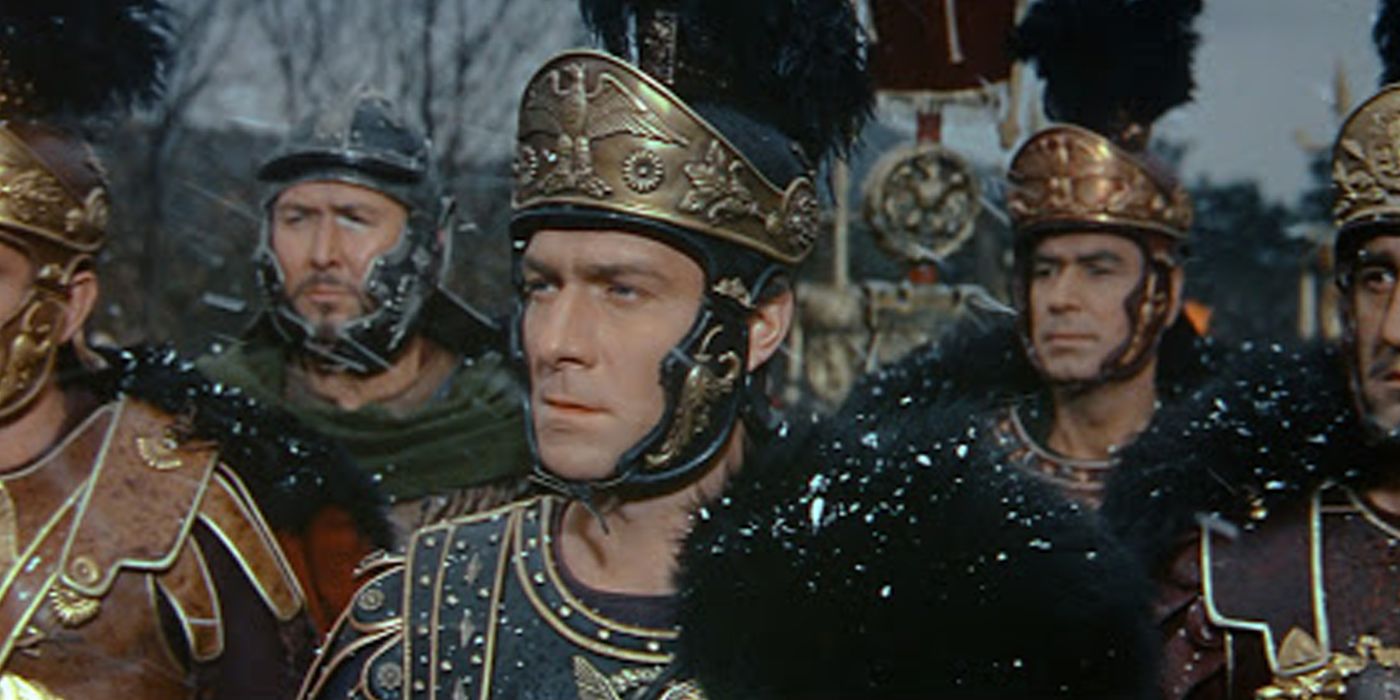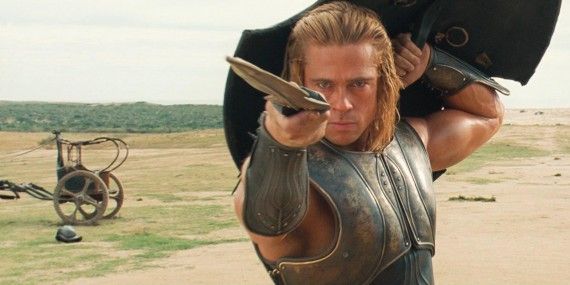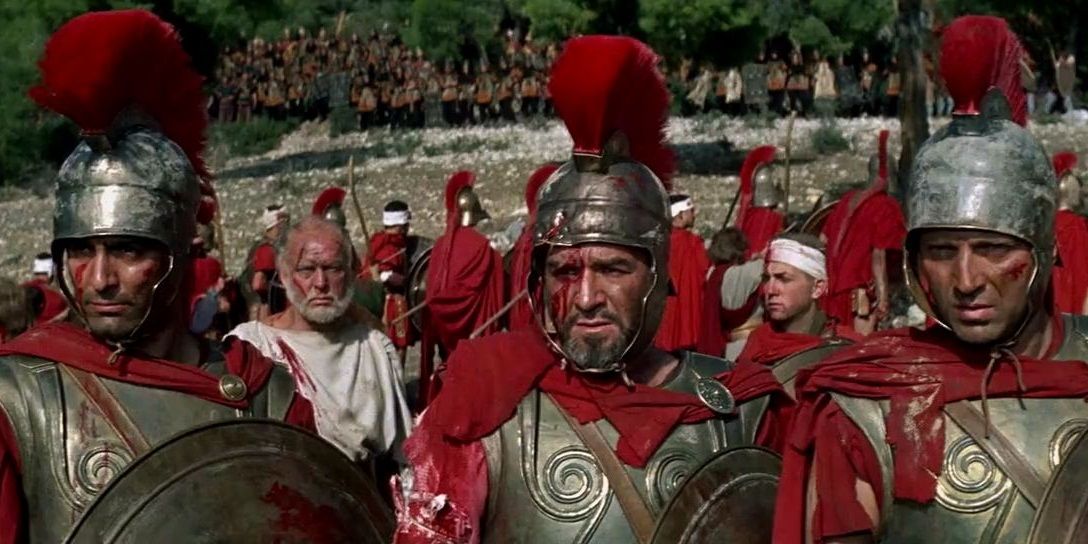Wars from ancient civilizations like Greece and Rome have always caught the fancy of Hollywood. This is evident from epic historical drama films of the last century and this one including the likes of Spartacus, Gladiator, and 300.
Apart from Greek and Roman battles, wars like the Crusades and non-European civilizations like the Mayans have also found their way into popular cinema. As has become the norm, these films are also filled with factual errors and inaccuracies that might make these films not as historically realistic as they are supposed to be.
300 (2006)
Zack Snyder's blockbuster 300, much like Frank Miller's original comic book, is a fictional retelling of the Battle of Thermopylae in 480 BC. Legend has it that this war was fought between Persian forces and a Spartan army of 300 soldiers. Even though the Spartans lost, the film glorifies their valor for dramatic potential.
Needless to say, 300 is riddled with factual inaccuracies. The Persian antagonist Xerxes refers to himself as a "god-king" which seems strange as Persian monarchs were Zoroastrians. Their faith propagated the worship of a monothesutic Creator and being a God King would be blasphemous. Further, as stated by History Extra, Sparta had allied itself with other Greek states. So, the 300 Spartans were accompanied by more soldiers from Greece.
Alexander (2004)
Alexander attempts to serve as a biopic of the Macedonian ruler Alexander the Great and his global conquests. However, the film was heavily panned for its numerous creative liberties.
Because of his many conquests, Alexander was in the middle of many battles but this film attempts at condensing most of them. For instance, the film's director Oliver Stone himself admitted in the DVD commentary that he condensed the Battles of Granicus, Issus, and Gaugamela into one simple battle. Even the climatic Battle of Hydaspes in India is depicted in a jungle when it actually took place on the banks of the river Jhelum.
Apocalypto (2006)
An young Mesoamerican warrior's quest for survival forms the narrative of Apocalypto. As he is captured for a human sacrifice by a violent Mayan tribe waging war on other peaceful one, the Mayan civilization also faces its decline.
The major flaw with the film is its unrealistic depiction of Mayan tribes as most of their traits are taken from Aztec heritage instead. Apocalypto's Mayans take out hearts of people and throw them down a temple. This was an Aztec practice and in real-life, Mayans would have just resorted to beheading. Hence, by mixing Aztec and Mayan identities, Apocalypto becomes a historical movie that is dangerously inaccurate.
Gladiator (2000)
Even though Gladiator is a fictional story, it does involve various real-life figures from the Roman civilization. These include the ruler Marcus Aurelius and his son Commodus. The movie is centered upon the gladiator fights in Roman amphitheatres which was again a true phenomenon.
There are minor inaccuracies strewn all over the film. For example, one of Maximus' opponents uses a spiked ball and chain as a weapon but such a weapon was introduced in medieval Europe instead of ancient Rome. The biggest historical lie in the film might be Marcus Aurelius' death. While the emperor died of unknown causes, the Ridley Scott-directed movie shows that his son Commodus murders him.
Kingdom Of Heaven (2005)
A blacksmith called Balian finds himself in the middle of the Crusades when he visits Jersulem and becomes the city's protector. Despite Kingdom of Heaven garnering negative reviews, a Director's Cut of the movie redeemed its reputation for some viewers. At the same time, it is not surprising to find some inaccurate depictions of the Crusades and its soldiers.
The Christian soldiers of the 12th century are mostly seen wearing the Roman cross (the modern crucifix symbol) while in fact, this is supposed to be the Maltese cross (a symbol made of four arrowheads). The culture of the Muslim soldiers is also shown in not the most accurate fashion. They are shown to be praying during the prayer call while in reality, the call precedes the prayer. The characer Mullah is also shown to wear clothes with verses of Quran printed on them while the scripture actually prohibits to write such verses or the names of Allah on any clothing.
Spartacus (1960)
Kirk Douglas starred as the former gladiator and slave leader Spartacus who lead a rebellion against the Roman Republic. His clash formed the major conflict in what is known as the Third Servile War.
Like many of the best gladiator films, Spartacus did ignore some of the historical realities of its subject matter. Spartacus is shown as the undisputed leader of the revolting slaves while in fact, DailyHistory.org states that other slaves were also influential in the leadership. One such former slave was Crixus the Gaul whose role is very limited in the film. The famous 'I am Spartacus' ending is also a dramatization as he was most likely killed in battle instead of being crucified.
The Fall Of The Roman Empire (1964)
Contrary to what it may suggest, The Fall of the Roman Empire doesn't actually discuss the empire's end but focuses on the end of a golden age, particularly Marcus Aurelius' death and the subsequent political chaos.
Much like Gladiator, the film falters in depicting the death in question. Legends suggest that Aurelius was poisoned or assassinated by his son Commodus but the truth isn't that dramatic. The cause for his death remains unknown but it is likely that it happened because of fatigue after years of military campaigns. The film also covers the possibility of co-emperors, a concept that arose in the Roman Empire under the rule of Diocletian and not Aurelius.
Braveheart (1995)
Directed by and starring Mel Gibson, this Oscar-winning movie might not have aged well because of its goofs. Not only does it heavily dramatize Scottish warrior William Wallace's rebellion agains England's King Edward I but the film is also filled with some laughable anachronisms.
Braveheart has a plenty of scenes where modern clothing is visible. In one scene, the Magistrate is rolling down a hill revealing a pair of jeans underneath his chainmail as well as a back harness. Wrist watches and running shoes can also be spotted in some of the battle scenes.
Troy (2004)
As the title reveals, this epic film is an adaptation of Homer's Iliad, a piece of literature that is already filled with mythological and fantasy elements. Still, Troy attempts to do away with the myths and tries to incorporate a realistic approach. This doesn't mean that the Brad Pitt-starrer doesn't have its share of goofs.
There are coins circulated in the film and some are even placed on the eyes of the dead. However, the Trojan War took place way before 7th century BC when coined money was invented. Troy is set in 1250 BC but its characters don armor and wield weapons that is reminscent of Greece's Classical Period that spans from 5th to 4th centuries BC.
The 300 Spartans (1962)
Before 300 garnered a cult following, the Battle of Thermopylae was also the subject of The 300 Spartans. The major inaccuracy with the film was that it blended Greek and Roman cultures in its depiction of the Spartan soldiers.
The Greek soldiers can often be found uttering the name of 'Jove' as an exclamation. However, Jove is another name for the Roman god Jupiter whose Greek counterpart was Zeus. The Spartan side's leader Leonidas and his officers also seem to be wearing Roman-style legionaire helmets.

